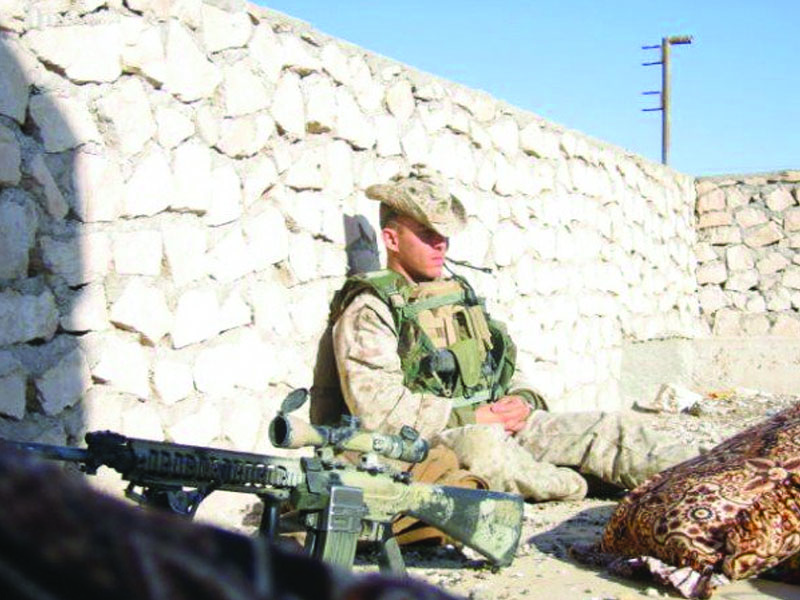
The Battle of the Emerald Wadi
By: Maj Clinton A. Culp, USMC (Ret)Posted on September 15, 2025
From the Leatherneck Archives: March 2015
Editor’s note: The following article, written by the commander of Weapons Company, pro-vides a firsthand account of 3rd Battalion, 6th Marine Regiment along the Emerald Wadi in Al Qa’im, Al Anbar Province, Iraq, in October 2005.
The 3rd Battalion, 6th Marine Regiment deployed to the Al Qa’im region of Iraq in late August 2005. When 3/6 assumed control of the battlespace from 3/2 late in the summer of 2005, the entire region was strongly influenced by insurgents and foreign fighters.
Operation Iron Fist began on Oct. 1, 2005, in the towns of Sadah and eastern Karabilah in the Al Qa’im region of Al Anbar province. Task Force 3/6 was given the arduous mission of clearing insurgents and disrupting the lines of communication along the Euphrates River Valley from Syria. The intent was to establish battle positions (BPs), maintain a presence in the towns and create relationships with the locals. The mission was accomplished, and both towns were cleared as the battalion began to conduct patrols and build a rapport with the local population.
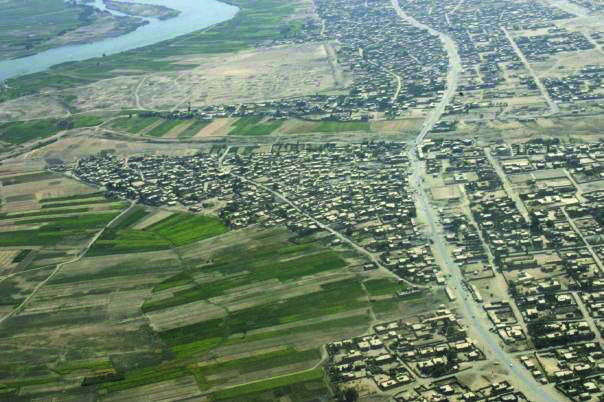
After the success of Operation Iron Fist, elements of Weapons Company, 3/6 oriented to the west along the dried creek bed known as the Emerald Wadi in order to disrupt and interdict insurgents attempting to move to the east. According to Captain Brendan Heatherman, the commanding officer of Co K, 3/6, the positions along the wadi led the insurgency to believe that a push into Karabilah and Husaybah from the east was imminent. This mistaken belief would be especially beneficial in later months during Operation Steel Curtain when 3/6 came from the opposite direction.
Lieutenant Colonel Julian D. Alford, CO, 3rd Bn, 6th Marines, assigned Weapons Co’s First Mobile Assault Platoon (MAP 1), led by First Lieutenant Jeremy Wilkinson, and its Scout Sniper Plt (Reaper), led by Gunnery Sergeant Donald Rieg, with the mission of maintaining continuous observation of the two bridges (one north and one south) over the Emerald Wadi separating western and eastern Karabilah. Gunny Rieg had recently taken command of the platoon when 1stLt Tom Wilberg was wounded after his up-armored HMMWV (high-mobility, multipurpose, wheeled vehicle) struck an improvised explosive device (IED) a few days earlier.
Gunny Rieg, along with two four-man sniper teams (Sergeant Jeremy Riddle’s and Lance Corporal George Hatchcock’s teams), established a position in a building along the wadi. It was a typical large two-story concrete house with a walled roof that provided clear observation of both bridges and good fields of fire. The house, known as Reaper base, also had an unusually tall and thick concrete-walled yard where two or three gun trucks could be parked.
It did not take long for the enemy to take umbrage at Reaper’s presence, and they launched a volley of rockets, mortars, small-arms and machine-gun fire at Reaper’s position. During the fight, one Marine finished staging ammunition and equipment in a ground-floor room when a C5 rocket exploded in the house, narrowly missing both the Marine and the ammunition. Reaper exchanged fire across the wadi for at least two hours until shortly after nightfall.
It was an indication of what was to come for the next 21 days.
On the morning of Oct. 7, other Reaper teams and two tanks (Tiger teams 3 and 4) arrived, and improvements for the defense of the house began immediately. The plan was for Tigers 3 and 4 to rotate with Tigers 1 and 2 every few days. Loopholes were created, and sandbags were trucked in to reinforce the walls and sniper hides. During the day, the enemy launched more than a half-dozen rockets and rocket-propelled grenades (RPGs) at the house and tanks—with little effectiveness. The tanks returned fire with main gun rounds at the enemy firing positions, silencing the rocket and RPG fire. Sporadic and inaccurate small-arms fire was received throughout the day, which proved to be more annoying than effective. The pattern continued for the next two days.
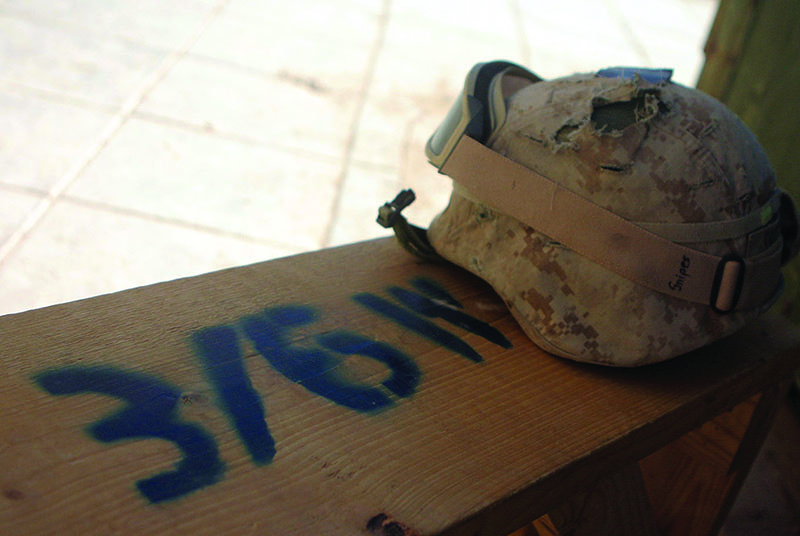
On Oct. 10, a squad of “Kilo” Co Marines arrived from BP Chosin to help with security as sniper teams were pulled from Reaper base to conduct other missions. Capt Heatherman, the Co K commander, said, “We didn’t feel our mission was to go out and find firefights because they would find us.” His words were proven true that day as the squad from Kilo Co was welcomed by the enemy opening up with RPGs and small-arms fire.
Reaper teams led by Sgt Riddle and Sgt Thomas Smith departed Reaper base early the next morning across Route Diamond to set up an ambush on an enemy firing position. At 0700, two men were spotted with rockets moving to another firing position. Shortly afterward, rockets were fired at Reaper base, causing no damage. Knowing the probable egress route the men would take, the Reaper teams prepared for their return. The two men, carrying their rocket launchers, soon returned the same way they had come; they would not fire at Reaper base, or anyone else for that matter, again.
Later that day, one of the Tiger teams engaged with and killed three men who were preparing to launch RPGs from a house across the wadi. Two main gun rounds ensured no fire was received from that house again. Later that night, mortar rounds landed just outside the house walls. Reaper remained on alert throughout the night, expecting a night attack that did not materialize.
The morning of Oct. 12 dawned with sporadic rifle fire on Reaper base, but the origin of the shots could not be determined. Two hours later, Sgt Smith was in the firing position on the north side of the house when he spotted two insurgents shooting at the base. He took two shots with his heavy barrel M16, putting one man down immediately and hitting the other. The second insurgent managed to find cover before he was killed. It had become clear that as long as Reaper base was occupied, the insurgents would try to force out the Marines.

LtCol Alford sent one of the battalion’s forward air controllers, Capt Ryan Pope, call sign “Zero,” and his radio-telegraph operator, Corporal Kevin Williams, to assist in the fight. They went right to work as, yet again, machine-gun and mortar fire was inbound. With marking assistance from the tanks, Marine Light Attack Helicopter Squadron (HMLA) 369, the “Gunfighters,” made several gun runs on the insurgent firing position and forward observer.
At the same time, Kilo Co was under mortar attack at BP Iwo Jima. Cpl Scott Royal’s Reaper team 2 and LCpl Hatch-cock’s team 7 had moved to a building in eastern Karabilah to observe Main Supply Route (MSR) Diamond, west of BP Iwo, looking for the insurgent mortar crews. Within five minutes of the mortar fire stopping, two men forced their way into the building where the Reaper teams were located but were shot by the security man on LCpl Hatchcock’s team as they entered the building. The insurgents started to fire on Reaper base early on the morning of Oct. 13 and continued to do so with small arms until midday when machine guns began firing from multiple positions.
Kilo Co’s 3d Plt had a BP to the south, and it began to receive fire as well. The accuracy of the insurgents’ rounds seemed to improve dramatically. Reaper identified one building across the wadi from which insurgents were firing; Zero had the Gunfighters engage with hellfire missiles, and the fire from the enemy decreased significantly.
Cpl Eliel Quinones, or “Q” as his fellow Marines called him, was in the “crow’s nest” on the roof of Reaper base when he took a single round to the head. The round cracked his skull, removing his hair and portions of his scalp, yet somehow he remained conscious. As he was pulled out of the firing position and moved into the house, he managed to identify the building from which the insurgent shot him. A medevac was called for, but Army helicopters were out too far to assist.
Zero and Cpl Williams worked diligently to get a UH-1N Huey on station from the Gunfighters to conduct the medevac, and with two tank teams and a light armored reconnaissance (LAR) platoon providing covering fire, the Huey was able to conduct the medevac. In an incredible feat of flying prowess, the helicopter put down in the tiny landing zone, with less than 6 feet from the rotors to light poles. It took less than eight minutes from the time Cpl Quinones was hit until the time he was placed in the Huey. He was awarded a Navy and Marine Corps Achievement Medal with combat “V” for his efforts in identifying the source of fire despite his wounds.
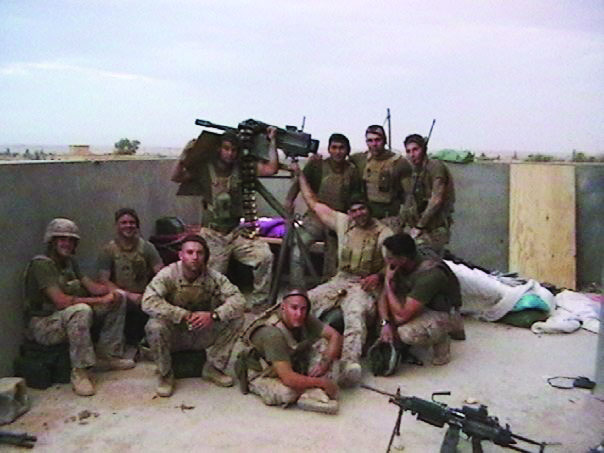
As the insurgents’ accuracy increased, Reaper Marines took more and more care with their movements, even ducking behind curtained windows. A C5 rocket sailed just over Reaper base and hit the house to the south. It missed Reaper base by only a foot or so.
On Oct. 14, Zero vectored in ScanEagle, to take a look at the buildings and road just to the west side of the buildings that were directly adjacent to the wadi. As the afternoon began, enemy machine-gun and small-arms fire began anew. ScanEagle located the source of fire, and a GBU-12 bomb was dropped on the position. Shortly afterward, the tank platoon commander was struck by small arms while moving down MSR Diamond. The tanks returned fire as the tank moved back to a covered position for the medevac. As the sun went down, so did the incoming fire.
The morning of the 15th brought more of the same, including more accurate small-arms fire from one or two shooters. The tank teams needed to pull back to the railroad station at Al Qa’im (3/6’s main base) for some maintenance, so the LAR Plt took up positions to Reaper’s immediate flanks. No sooner had it pulled into position than it began to receive RPG fire. The platoon returned fire while Zero dropped another GBU-12 on the insurgents’ position. Insurgent fire died off for the rest of the day.
Before sunup on Oct. 16, Cpl Royal’s and Sgt Erik Rue’s Reaper teams moved to a hide position that would cover the flank of the LAR Plt. At 0815, the teams spotted two insurgents moving along MSR Bronze with RPGs and AK-47s in order to get a firing position on the light armored vehicles (LAVs) and tanks. The enemy was dispatched, but the teams began to take fire from other insurgents.
As the LAR Plt moved to extract the teams, more insurgents were spotted mov-ing to get a line of fire on the LAVs. Mean-while, Zero brought in rotary-wing close air support (CAS), and it seemed the per-fect time to try the MK19, which had re-cently been installed on the roof of Reaper base after one of the snipers had remarked, “If 240s are good, MK19s are better!”
The tall mount was then taken off a cargo HMMWV and sandbagged on the roof and a tarp placed over it for concealment. The MK19 thumped away as the Gunfighters made a few runs in support of the extraction. The engagement escalated as more insurgents moved to isolate the Reaper teams; even 3rd Plt, Kilo Co got into the mix as the fire and movement spilled over into its sector. LAR Plt and the Reaper teams were able to return to the Reaper base around 1230. Every vehicle had taken multiple small-arms and machine-gun hits. Each also had at least one flat tire and several near misses of RPGs. At least 18 insurgents had been killed with no Marine casualties.
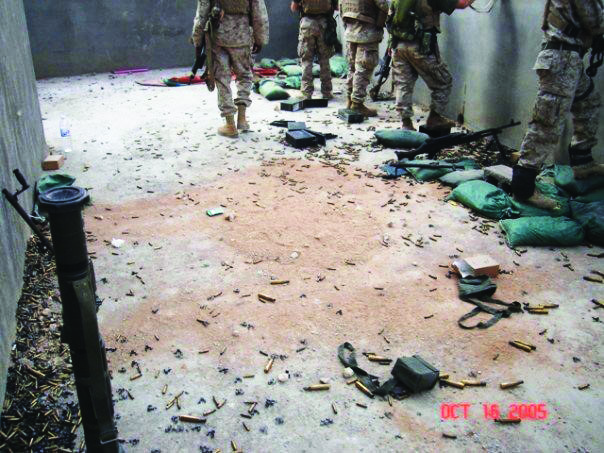
The next few days were relatively quiet, and on the 19th, Air/Naval Gunfire Liaison Co’s (ANGLICO’s) Wild Eagle 3-1 arrived on deck to assist Zero with the CAS fight. One of the Reaper teams spotted several insurgents setting up a mortar on a roof-top. After waiting until the insurgent mortar team was ready to fire, Reaper opened up with the MK19. It took a few rounds to get on target, but all five insurgents and their weapon system were eliminated. The battalion took a hard hit that same day when a suicide vehicle was driven into a squad of Marines from Co K just north of BP Iwo Jima. LCpl Norman Anderson III was killed and every other squad member wounded. The next day brought another near miss from a C5 rocket, which impacted the house to the south again.
On the morning of Oct. 22, a large dust cloud formed in front of one of the tanks after an RPG impacted less than one meter in front of it. The tanks returned fire with .50-caliber rounds and a main gun round. About an hour later, Reaper teams spotted two insurgents with AKs and RPGs trying to sneak across MSR Diamond; the teams dispatched them. Only light fire was received throughout the rest of the day and for the next few days.
After a relatively quiet few days, six insurgents were spotted on MSR Diamond on Oct. 25; one was shot before the LAVs maneuvered on the insurgents’ anticipated route and caught them in the open. Mortar fire was called in to close off the insurgents’ egress. At the same time, Reaper base was receiving small arms and machine-gun fire. Tanks returned fire with the help of a Hellfire missile from one of the Gunfighters’ Hueys.
The highlight of the day occurred shortly after the engagement ended as LtCol Alford reenlisted Sgt Riddle on the roof of Reaper base.
The morning of the 26th started at 0625 as more than 20 insurgents with AKs and RPGs were spotted moving on the west side of the Emerald Wadi. Reaper base, tanks and LAR were put on “stand-to,” and air was requested. Reports were received of several of the insurgents placing IEDs along the roads on the west side of the bridges that crossed the wadi. Both 3rd Plt, Kilo Co and MAP 1 were put on notice as well. Before the air arrived on station, the tanks and LAR Plt maneuvered into position and mortars were called in as Reaper, tanks and LAR engaged. Several of the insurgents fell in the initial volley, and the rest fled into the surrounding buildings. The insurgents tried to consolidate their position and returned AK, RPK (Soviet light machine gun) and RPG fire to no avail as rotary-wing and fixed-wing CAS arrived on station.
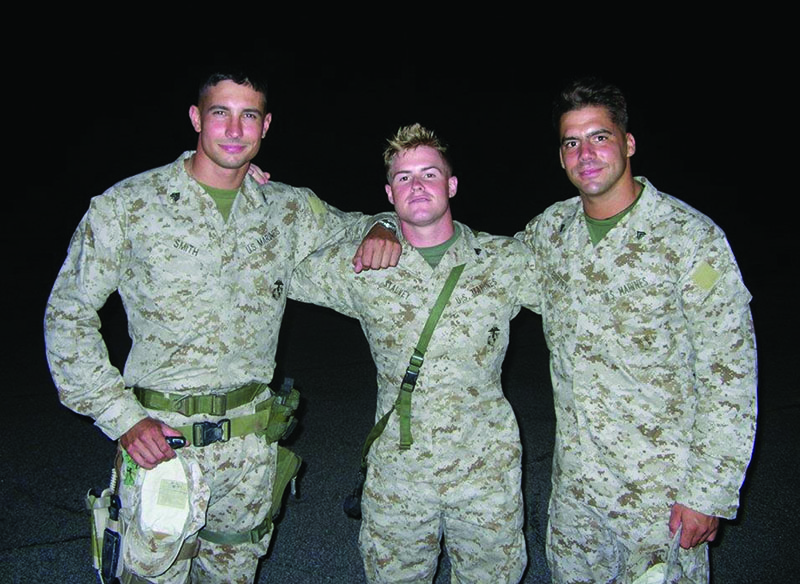
Capt Phil Laing and his LAR Co arrived at the same time for a battle handover. The 27th saw light small-arms fire which Laing’s company easily returned. On the morning of the 28th, 1stLt Durand Tanner’s MAP 2 arrived to extract Reaper. The LAR Co provided cover for Reaper as they withdrew to Al Qa’im to rest and refit for the next mission: Operation Steel Curtain.
The Scout Sniper Plt, with the help of MAP 1, 3rd Plt, Kilo Co, tanks, LAR and CAS had kept the insurgents looking in the wrong direction for 22 days. Alford later reflected proudly, “Those boys had a hell of a fight for those three weeks, and it allowed us to move behind the enemy and attack them in the rear. Classic operational flanking movement.”
The Battle of the Emerald Wadi was a critical element in 3/6’s ability to consolidate combat power in Al Qa’im before the launch of Operation Steel Curtain.
Executive Editor’s note: The November issue of Leatherneck will include an article about the “Fox” Co, 2/1 Marines who were fighting in New Ubaydi during Operation Steel Curtain.
Author’s bio: A prior enlisted Marine, Maj Clinton A. Culp was commissioned in 1997 and served as an advisor to the Afghan Commando Battalion during Operation Enduring Freedom and as the CO of Weapons Co, 3rd Bn, 6th Marines during Operation Iraqi Freedom. He re-tired in 2009.
Featured Image (Top): A Marine sniper from 3/6 takes a well-earned break.




